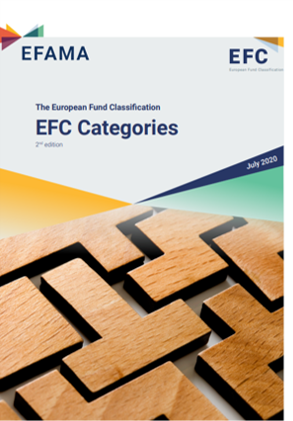The European Fund Classification (EFC) is a pan-European classification system of investment funds, which is maintained by a Task Force of EFAMA.
Bernard Delbecque, EFAMA Senior Director, commented: “Providing a clear and transparent classification of funds is essential to promote cross-border distribution of funds and better protect investors. The EFC is ideally placed to contribute to this goal by providing a harmonised fund classification system to help European investors and their advisors compare funds from different jurisdictions and make sound investment decisions. EFAMA strongly encourages the adoption of the EFC by fund managers and distributors to contribute to a more integrated and competitive European fund market."
The EFC offers numerous advantages:
- It uses a proven and stable classification method based on the portfolio holdings of funds.
- It is built on well-defined criteria that permit simple comparison of like for like funds and ensure transparency for investors and fund management companies.
- It involves regular monitoring of holdings by a classification administrator (FundConnect), in total openness, independence and transparency with fund groups, data vendors, trade associations and other interested stakeholders.
- It is performed free of charge.
- It is the only fund classification structure that is owned and managed by the fund industry itself, without being influenced by any particular singular commercial interest.
The main novelty in this edition of the EFC brochure is the introduction of 'investment themes' in the classification of equity funds, next to the three main classification criteria: sector, geographical exposure and market capitalization. Twelve specific investment themes have been identified as particular relevant in today's market: Natural Resources, Infrastructure, Climate, Agriculture, Water, Biotechnology, Medtech, Clean Energy, Digitalisation, Nutrition, Global Trends and High Dividend.
Currently, the EFC universe covers close to 5,400 European funds incorporating 36,000 share classes with a verified classification, while the indicative classification covers more than 14,000 funds incorporating around 47,500 share classes.





























